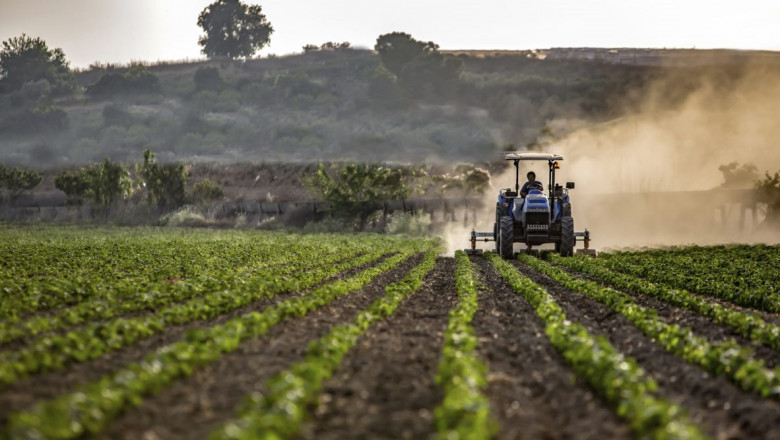views
As the global demand for food grows and environmental concerns mount, small farms are playing a critical role in leading the charge toward a more resilient and eco-friendly agricultural future. Sustainable agriculture methods are no longer optional—they're essential. These practices not only protect the environment but also improve crop yields, support biodiversity, and build long-term farm profitability.
Here are seven proven sustainable agriculture methods that small farms can adopt today to cultivate a healthier tomorrow.
1. Crop Rotation: Nature’s Nutrient Manager
Crop rotation involves changing the type of crops grown in a particular field from season to season. For example, a farmer might plant legumes one year and grains the next.
Why it works:
-
Different crops consume and replenish different nutrients.
-
Rotating crops helps reduce pest buildup and soil-borne diseases.
-
It naturally breaks weed cycles.
For small farms, this method boosts soil fertility and reduces dependency on synthetic fertilizers, making it both a smart and sustainable choice.
2. Cover Cropping: A Living Soil Blanket
Cover crops like clover, rye, and vetch are planted during off-seasons when main crops aren’t growing.
Benefits include:
-
Preventing erosion by protecting topsoil.
-
Enhancing soil structure and increasing organic matter.
-
Fixing nitrogen naturally, reducing the need for chemical inputs.
This method is cost-effective and improves the health of the soil, which is the foundation of every productive farm.
3. Integrated Pest Management (IPM): Smarter Pest Control
IPM emphasizes monitoring pest populations and using biological, physical, and cultural control methods before turning to chemical solutions.
Practical techniques:
-
Releasing beneficial insects like ladybugs to control aphids.
-
Installing traps or barriers to limit pest movement.
-
Planting pest-repellent species as natural deterrents.
This approach helps small farmers reduce pesticide use while protecting pollinators and beneficial insects.
4. Composting and Organic Fertilization
Instead of relying on synthetic fertilizers, small farms can recycle farm waste—such as manure, crop residues, and kitchen scraps—into nutrient-rich compost.
Advantages:
-
Improves soil texture and microbial health.
-
Reduces landfill waste and input costs.
-
Provides a slow-release source of nutrients tailored to the soil.
Creating compost on-site is a powerful way for small farms to build soil fertility naturally and sustainably.
5. Drip Irrigation: Efficient Water Use
Water is a precious resource. Drip irrigation systems deliver water directly to the roots of plants, minimizing waste and evaporation.
Key benefits:
-
Saves water compared to traditional flood or sprinkler methods.
-
Reduces weed growth by targeting water only where it's needed.
-
Minimizes the risk of water-borne diseases.
Especially in regions prone to drought, drip irrigation ensures crops receive just the right amount of water—no more, no less.
6. Agroforestry: Integrating Trees with Crops
Agroforestry is the practice of growing trees and shrubs alongside crops or livestock. It blends agriculture and forestry into a symbiotic relationship.
Impactful outcomes:
-
Trees provide windbreaks, shade, and erosion control.
-
Deep-rooted trees help capture nutrients and water from deeper soil layers.
-
Some trees can produce additional products (like nuts or fruits) for diversified income.
For small farms, agroforestry offers environmental protection while enhancing productivity.
7. Reduced Tillage and No-Till Farming
Tillage can disrupt soil structure and kill beneficial organisms. No-till farming avoids disturbing the soil, while reduced tillage limits soil disturbance.
Positive results:
-
Preserves soil carbon and microbial life.
-
Reduces erosion and compaction.
-
Saves fuel and labor costs.
This method supports long-term soil health and carbon sequestration—making it one of the most powerful sustainable agriculture methods available today.
Why These Methods Matter for Small Farms
Sustainable agriculture methods are not only environmentally sound—they’re economically smart. For small farms operating on tight margins, these techniques offer long-term benefits such as:
-
Lower input costs.
-
Increased resilience to pests and climate variability.
-
Enhanced market value through eco-certifications and consumer preference for sustainable goods.
By adopting even a few of these practices, small farms can increase productivity while supporting global efforts to fight climate change and preserve biodiversity.
Final Thoughts
Transitioning to sustainable agriculture may seem challenging at first, but the payoff is significant—for the farm, the community, and the planet. These seven proven methods offer practical, effective ways for small-scale farmers to grow food responsibly while safeguarding natural resources.
At Friend of the Earth, we believe that real change starts at the ground level—literally. By implementing sustainable practices today, small farms can help cultivate a thriving, healthier future for generations to come.
For more insights and resources on sustainable farming, visit us at Friend of The Earth.














Comments
0 comment